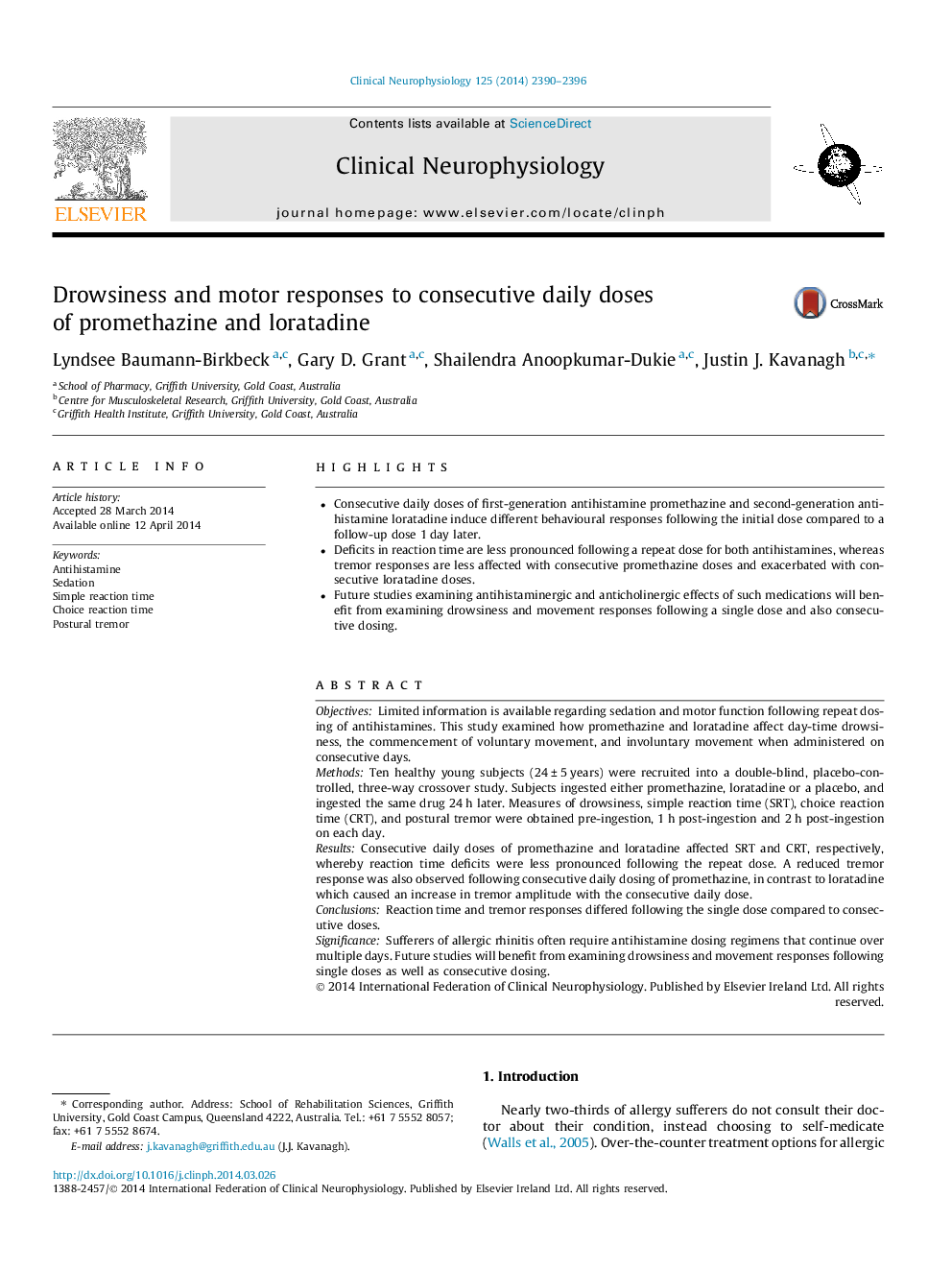| Article ID | Journal | Published Year | Pages | File Type |
|---|---|---|---|---|
| 3043455 | Clinical Neurophysiology | 2014 | 7 Pages |
•Consecutive daily doses of first-generation antihistamine promethazine and second-generation antihistamine loratadine induce different behavioural responses following the initial dose compared to a follow-up dose 1 day later.•Deficits in reaction time are less pronounced following a repeat dose for both antihistamines, whereas tremor responses are less affected with consecutive promethazine doses and exacerbated with consecutive loratadine doses.•Future studies examining antihistaminergic and anticholinergic effects of such medications will benefit from examining drowsiness and movement responses following a single dose and also consecutive dosing.
ObjectivesLimited information is available regarding sedation and motor function following repeat dosing of antihistamines. This study examined how promethazine and loratadine affect day-time drowsiness, the commencement of voluntary movement, and involuntary movement when administered on consecutive days.MethodsTen healthy young subjects (24 ± 5 years) were recruited into a double-blind, placebo-controlled, three-way crossover study. Subjects ingested either promethazine, loratadine or a placebo, and ingested the same drug 24 h later. Measures of drowsiness, simple reaction time (SRT), choice reaction time (CRT), and postural tremor were obtained pre-ingestion, 1 h post-ingestion and 2 h post-ingestion on each day.ResultsConsecutive daily doses of promethazine and loratadine affected SRT and CRT, respectively, whereby reaction time deficits were less pronounced following the repeat dose. A reduced tremor response was also observed following consecutive daily dosing of promethazine, in contrast to loratadine which caused an increase in tremor amplitude with the consecutive daily dose.ConclusionsReaction time and tremor responses differed following the single dose compared to consecutive doses.SignificanceSufferers of allergic rhinitis often require antihistamine dosing regimens that continue over multiple days. Future studies will benefit from examining drowsiness and movement responses following single doses as well as consecutive dosing.
